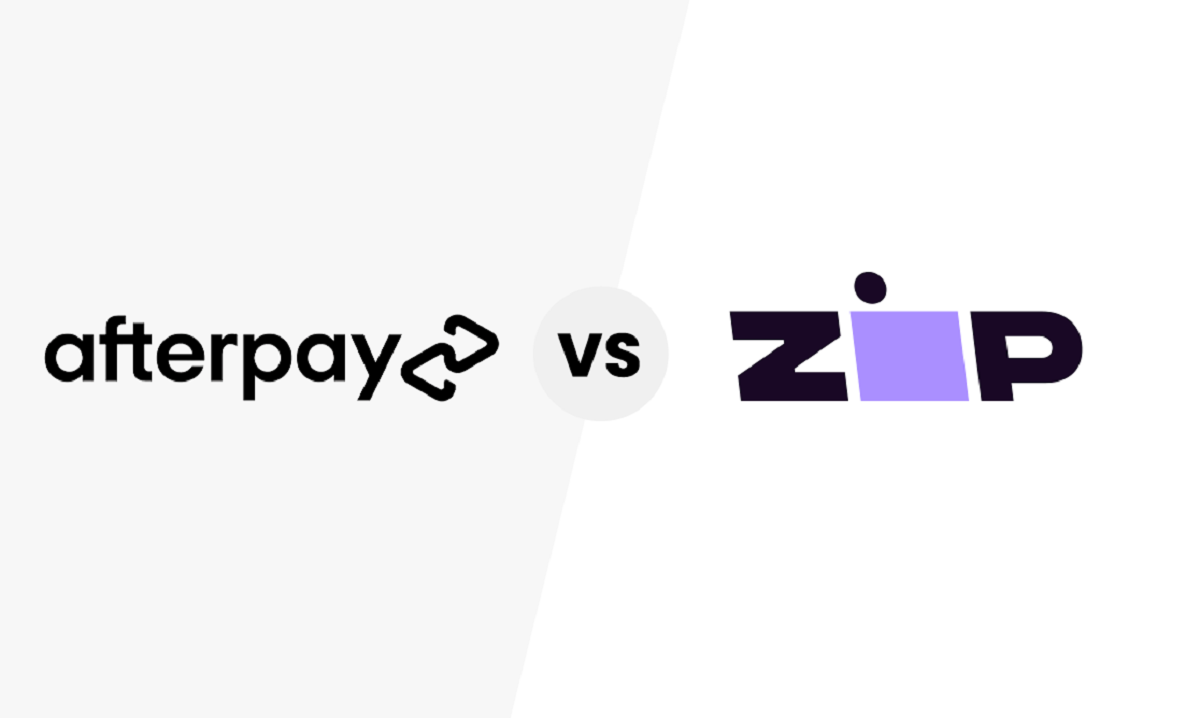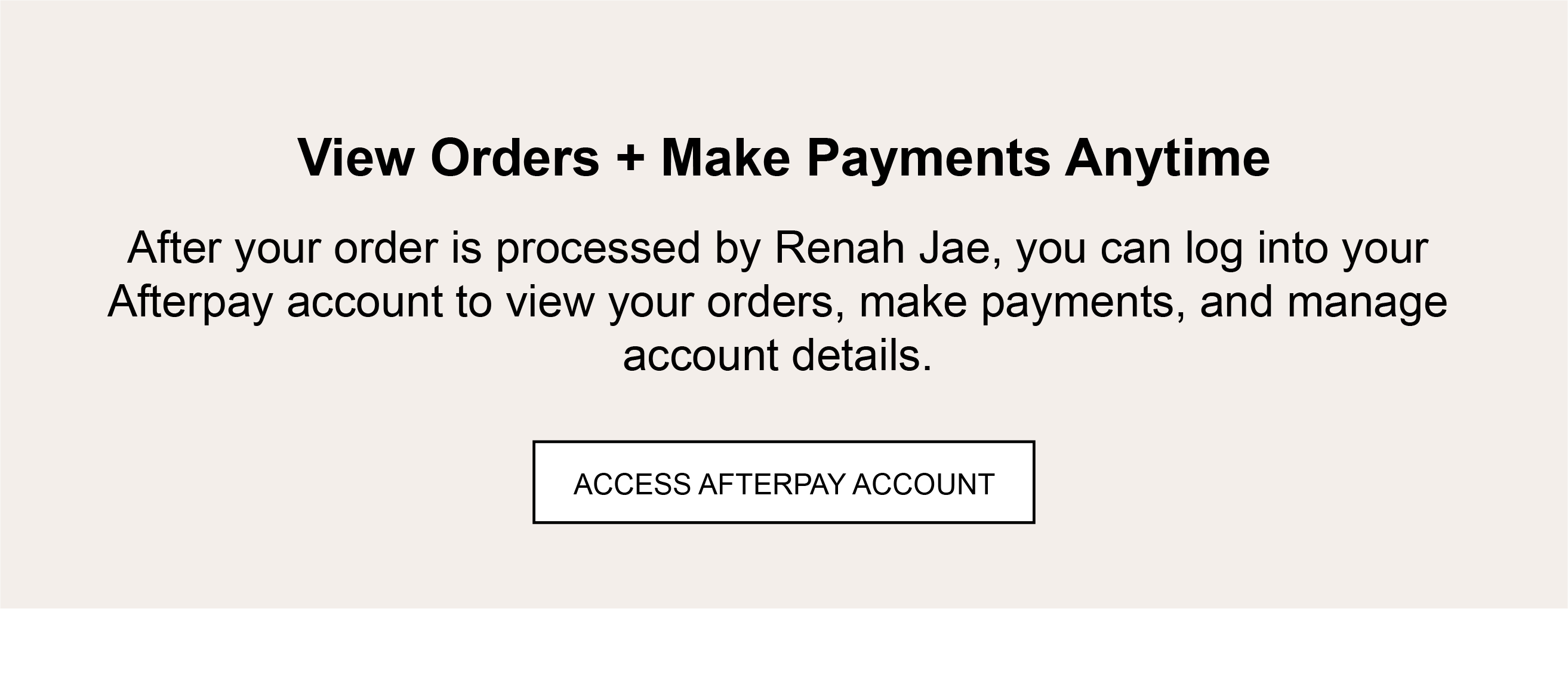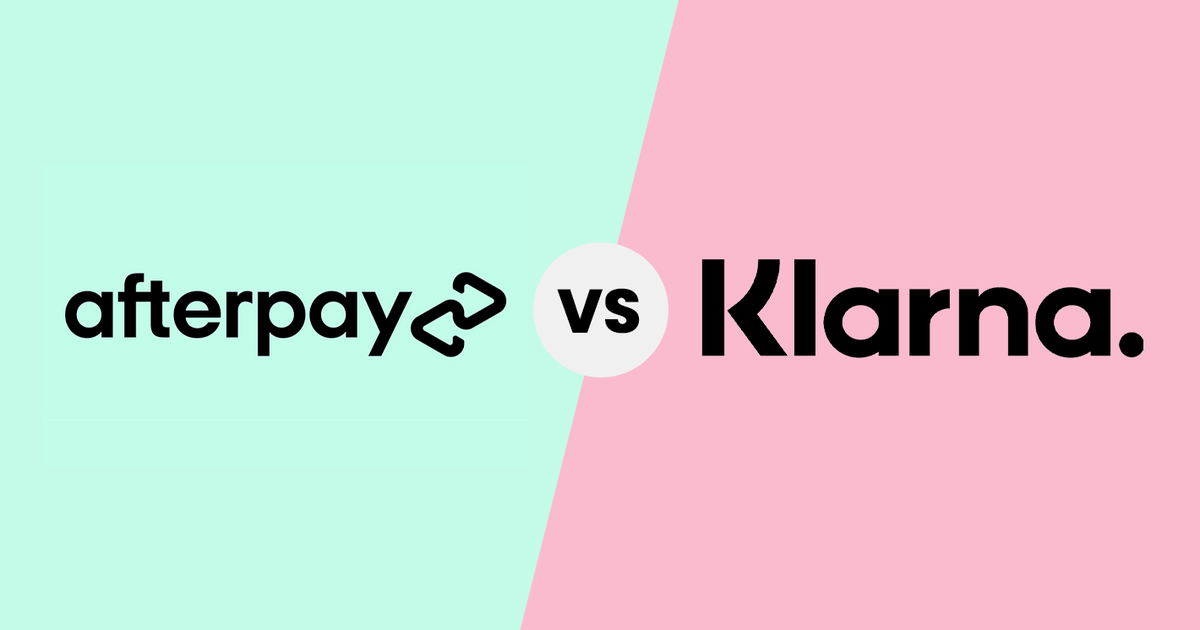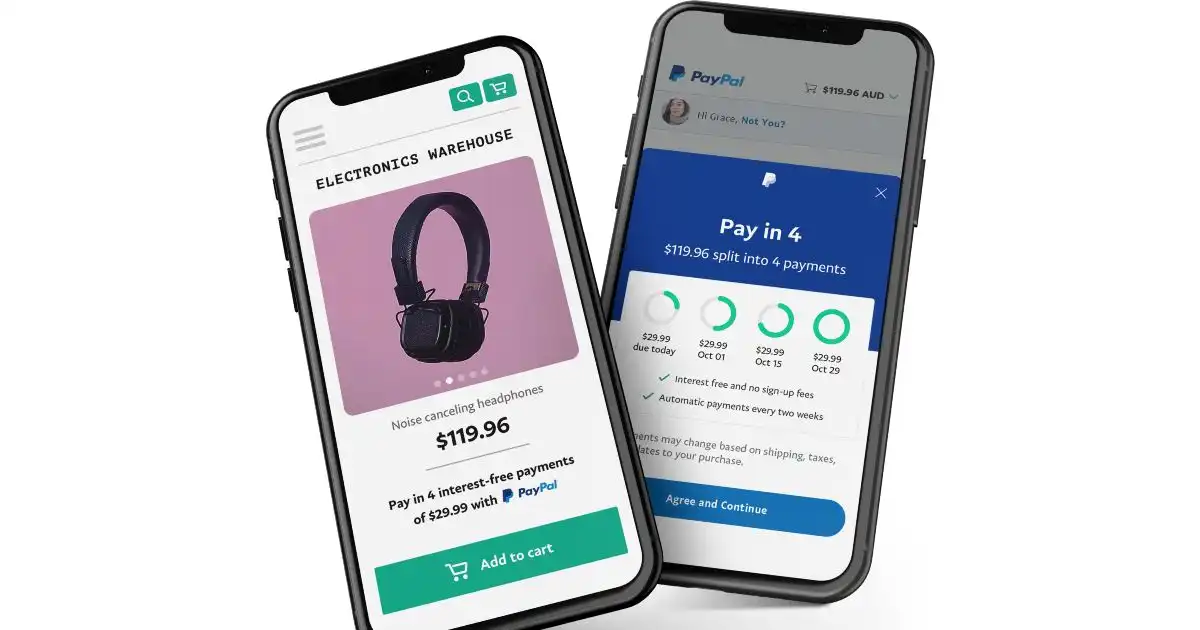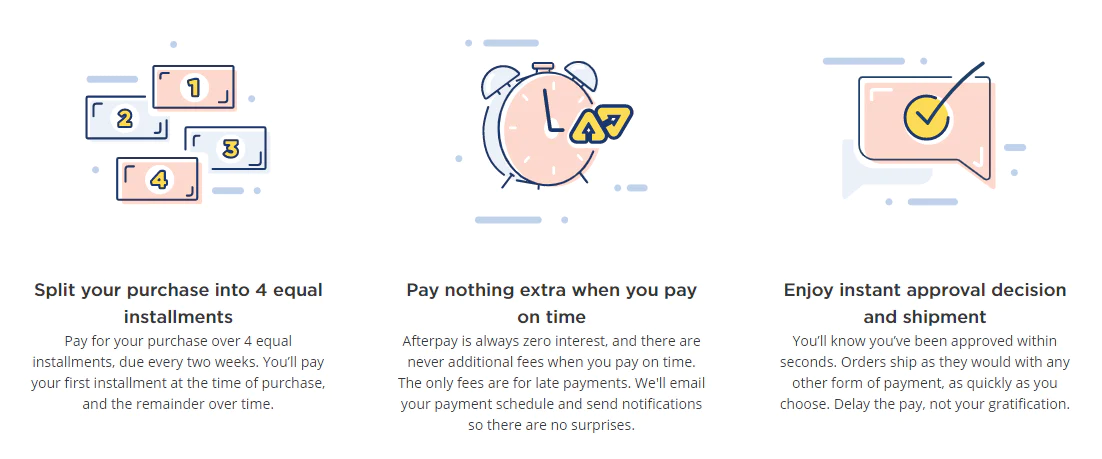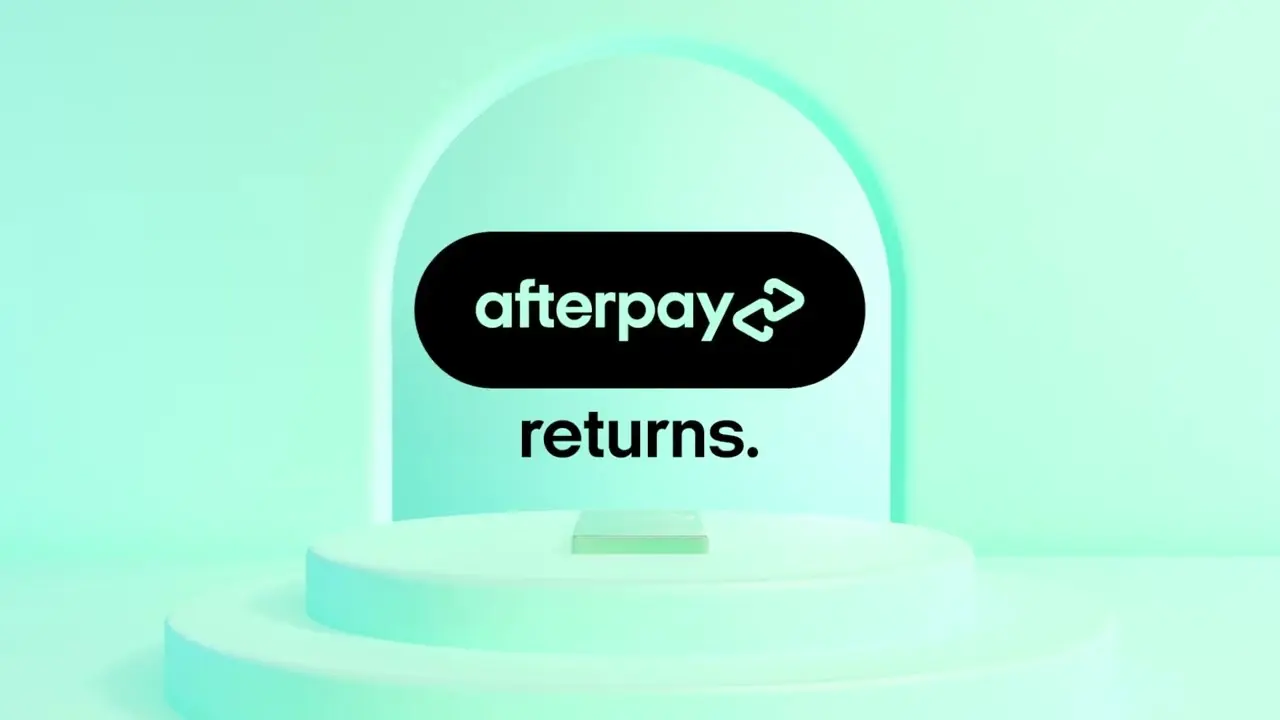Introduction
Welcome to the world of online shopping where convenience and flexibility are at the forefront. With the rise of e-commerce platforms, new payment options have emerged to make purchasing goods and services easier than ever before. Two popular options that have gained traction in recent years are Afterpay and Zip.
Afterpay and Zip are considered to be pioneers in the Buy Now, Pay Later (BNPL) industry, offering consumers the ability to make purchases and pay for them in installments. This innovative payment model has revolutionized the way people shop by providing a flexible alternative to traditional credit cards or loans.
But which one is better? In this article, we will delve into the details of Afterpay and Zip, exploring their features, benefits, and drawbacks to help you determine which payment option suits you best.
Before we dive into the specifics, let’s take a moment to understand what Afterpay and Zip are, and how they work.
What is Afterpay?
Afterpay is a popular payment platform that allows customers to make purchases and pay for them in four equal installments, with no interest or additional fees if paid on time. It offers a seamless and convenient shopping experience, particularly for those who prefer to budget their expenses or are unable to make upfront payments.
With Afterpay, customers can choose their desired items from participating online retailers and add them to their cart. During the checkout process, they can select Afterpay as their payment method. If it’s their first time using Afterpay, they will need to create an account and provide some personal and payment information. Once approved, the purchase amount is divided into four equal payments, with the first installment due at the time of purchase.
Afterpay offers a user-friendly interface, allowing customers to manage their payments, view their upcoming due dates, and track their spending. The remaining three installments are automatically deducted from their linked debit or credit card every two weeks until the full amount is paid off. This convenient feature ensures that customers can easily keep track of their payments and avoid any missed deadlines.
Another noteworthy aspect of Afterpay is that it does not perform a credit check when customers sign up. This makes it an accessible payment option for individuals with limited credit history or those who prefer to avoid traditional credit options. However, it’s important to note that Afterpay still considers factors such as outstanding Afterpay orders and repayment history in determining a customer’s eligibility for future purchases.
Overall, Afterpay offers a convenient and flexible payment option for consumers looking to split their purchases into manageable installments. With its widespread acceptance among various online retailers, it has gained popularity as a preferred payment method for many shoppers.
What is Zip?
Zip is a leading Buy Now, Pay Later (BNPL) platform that allows consumers to make purchases and pay for them in interest-free installments. It offers flexibility and convenience, enabling users to spread the cost of their purchases over time without incurring any additional fees.
Similar to Afterpay, Zip divides the total purchase amount into equal installments, typically ranging from four to twelve weeks, depending on the retailer and the amount being financed. Customers can make purchases using Zip by selecting it as their payment method during the checkout process.
When customers choose Zip as their payment option, they are required to create a Zip account and link their debit or credit card. Once the account is set up, they can proceed with their purchase, and Zip will automatically charge the first installment amount at the time of checkout.
One of the standout features of Zip is its interest-free payments. Unlike traditional credit cards or loans, Zip does not charge interest on the installments. However, if customers miss a payment or fail to meet the agreed-upon repayment schedule, they may be subject to late fees or penalties.
Another valuable aspect of Zip is its digital wallet, which allows users to store multiple payment methods, including credit and debit cards. This feature provides flexibility and convenience, making it easier for customers to manage their payments and choose the most suitable option for each transaction.
Furthermore, Zip offers a “Zip Pay” feature, which functions similarly to a line of credit. With Zip Pay, customers can make purchases up to a specific credit limit and have the flexibility to pay off the balance over time. It also offers a “Zip Money” feature that provides customers with a higher credit limit and longer repayment terms for larger purchases.
Overall, Zip is a versatile BNPL platform that gives consumers the freedom to split their purchases into manageable payments. With its interest-free installment options, convenient digital wallet, and additional credit features, Zip has become a popular choice among shoppers who value flexibility and affordability.
How do they work?
Both Afterpay and Zip operate on a similar concept, allowing consumers to make purchases and pay for them in installments. Here’s a breakdown of how they work:
Afterpay:
- Select Afterpay as the payment option during checkout when shopping online.
- Create an Afterpay account and provide the necessary personal and payment details.
- If eligible, the purchase amount is divided into four equal installments.
- The first installment is paid at the time of the purchase.
- Subsequent installments are automatically deducted from the linked debit or credit card every two weeks until the full amount is paid off.
- Manage repayment and view upcoming due dates through the Afterpay account.
Zip:
- Select Zip as the payment option when checking out online.
- Create a Zip account and link a debit or credit card.
- The purchase amount is divided into installments, typically four to twelve weeks, depending on the retailer and the amount being financed.
- The first installment is paid at the time of purchase.
- Subsequent installments are automatically charged to the linked card at regular intervals until the full amount is repaid.
- Access and manage payments through the Zip digital wallet.
In both cases, it’s essential to ensure that funds are available on the linked card at each installment due date to avoid late fees or penalties. Both Afterpay and Zip offer reminders and notifications to help customers stay on top of their payments.
It’s important to note that while the payments are interest-free, some late fees or penalties may apply if payments are missed or not made on time. It’s recommended to carefully review the terms and conditions of each platform before using their services.
Overall, Afterpay and Zip provide users with a convenient and flexible way to make purchases and manage their payments over time. By splitting the cost into installments, customers can enjoy their purchases immediately without the need for full upfront payment.
Merchant network
Both Afterpay and Zip have established extensive networks of participating merchants, allowing customers to use their payment services across a wide range of online and physical stores. Here’s an overview of their merchant networks:
Afterpay:
Afterpay has partnered with numerous retailers in various industries, including fashion, beauty, electronics, homeware, and more. It boasts an impressive lineup of popular brands and online stores, making it a convenient payment option for a diverse range of shopping needs.
Customers can explore Afterpay’s website or mobile app to discover participating merchants or look for the Afterpay logo at the checkout page of their favorite online retailers. This widespread acceptance ensures that customers have plenty of options when it comes to making purchases using Afterpay.
Zip:
Zip also offers a broad merchant network, with numerous online and retail partners across different industries. Customers can find Zip as a payment option on the websites of various popular brands, allowing them to enjoy the convenience of spreading payments for their desired products.
In addition, Zip has expanded its service to include other sectors beyond retail, such as travel and professional services. This enables users to make payments in installments for a wider range of goods and services, further enhancing the flexibility and convenience offered by the platform.
Both Afterpay and Zip continuously work to expand their merchant networks, adding new partnerships regularly. This ensures that customers have access to a wide range of merchants and products, allowing them to shop conveniently and enjoy the benefits of flexible payment options.
Payment options
When it comes to payment options, both Afterpay and Zip provide users with a range of choices to make their purchases more manageable. Here’s a closer look at the payment options offered by each platform:
Afterpay:
Afterpay primarily offers users the option to make purchases and pay for them in four equal installments. This payment model allows customers to split the total purchase amount into smaller, more manageable payments, without incurring any interest charges if paid on time.
Afterpay users can link their debit or credit card to their account and have the installment payments automatically deducted from that card. This provides a seamless payment experience, ensuring that customers don’t have to remember to make manual payments or worry about missed due dates.
In addition to the four-installment option, Afterpay recently introduced a feature called “Afterpay Extend.” This feature allows customers to make larger purchases and pay for them over a longer period of time, with additional fees and interest. This gives users even more flexibility when it comes to choosing their payment terms.
Zip:
Zip offers users multiple payment options depending on their needs and preferences. The primary payment option on Zip is to spread the cost of a purchase into interest-free installments over a set period.
However, Zip also offers a feature called “Zip Money,” which functions similarly to a line of credit. With Zip Money, customers can make purchases beyond their available funds and pay them off over a longer period, typically with interest applied. This feature is particularly useful for larger purchases or when customers need more financial flexibility.
Furthermore, Zip also provides users with a digital wallet where they can store multiple payment methods, including credit and debit cards. This allows customers to choose their preferred payment method for each transaction, providing additional convenience and flexibility.
Overall, both Afterpay and Zip offer flexible payment options that allow users to make purchases and spread the cost over time. Afterpay focuses on four equal installments, while Zip offers both interest-free installments and a line of credit through Zip Money. The availability of different payment options ensures that customers can choose the one that best suits their financial situation and preferences.
Late fees and penalties
While Afterpay and Zip provide convenient payment options, it’s crucial to be aware of the potential late fees and penalties associated with their services. Here’s an overview of how late fees and penalties work for both platforms:
Afterpay:
Afterpay has a transparent late fee policy to encourage responsible borrowing. If a payment is missed, Afterpay charges an initial late fee, typically around $10 AUD. If the payment remains unpaid seven days after the due date, an additional late fee is applied. Afterpay caps late fees at 25% of the order value or $68 AUD, whichever is less.
It’s important for Afterpay users to keep track of their payment due dates and ensure sufficient funds are available in their linked accounts to avoid incurring late fees. Afterpay provides reminders and notifications to help customers stay updated about their upcoming payments, ensuring they have ample time to make the necessary arrangements.
Zip:
Zip also has a late fee policy in place to encourage timely repayments. If a payment is missed, Zip charges a late fee, typically around $6 AUD, for each installment and for up to three missed payments. The maximum late fee amount depends on the purchase price, ranging from $27 AUD to $48 AUD.
Similar to Afterpay, Zip users are reminded of upcoming payments through notifications and statements. It’s important for customers to monitor their payment due dates and ensure that they have sufficient funds in the linked account to avoid late fees.
It’s worth noting that both Afterpay and Zip have implemented responsible lending practices and monitor customers’ repayment behaviors to ensure they can afford their repayments and avoid excessive debt. They may decline or limit future purchases if customers display a pattern of late or missed payments.
Customers of both platforms should be mindful of their payment obligations and take necessary measures to meet them on time. By doing so, they can enjoy the benefits of these services without incurring any late fees or penalties.
Customer reviews and experiences
When considering any payment platform, it’s useful to evaluate customer reviews and experiences to gain insights into the overall satisfaction and usability of the service. Here’s a look at what customers have to say about Afterpay and Zip:
Afterpay:
Overall, Afterpay has garnered positive reviews from customers who appreciate the convenience and flexibility it offers. Many users praise Afterpay for its easy signup process, user-friendly interface, and seamless payment experience. Customers enjoy the ability to budget their expenses and make purchases without the need for a traditional credit card.
However, there have been some concerns raised by customers regarding late fees. Some users have had difficulties keeping track of their payment due dates, leading to unexpected late fees. While Afterpay sends notifications and reminders, these incidents highlight the importance of staying vigilant and understanding the payment terms.
Additionally, some customers have reported challenges with refund processes and discrepancies in the billing cycle. However, it’s important to note that Afterpay strives to address customer concerns and improve their services based on feedback.
Zip:
Zip has also received positive feedback from customers who appreciate the convenience and flexibility it provides. Users praise Zip for its easy signup process, diverse merchant network, and interest-free payment installments.
Customers find Zip beneficial for managing their expenses and making larger purchases without the need for immediate full payment. The digital wallet feature is often commended for its convenience, allowing users to store multiple payment methods and choose the most suitable option for each transaction.
However, like any service, Zip has received some criticism as well. Some customers have reported challenges with the refund process, delayed payment notifications, and occasional technical issues. It’s important for users to communicate any issues promptly to Zip’s customer support team, as they are committed to resolving customer concerns efficiently.
These reviews and experiences highlight the importance of understanding the terms and conditions for both Afterpay and Zip, as well as staying vigilant about payment due dates. By doing so, customers can experience the benefits of convenient installment payments offered by these platforms.
Customer support
Customer support is an important aspect to consider when evaluating any payment platform, as it ensures timely assistance and resolutions to any issues or concerns that may arise. Here’s an overview of the customer support provided by Afterpay and Zip:
Afterpay:
Afterpay offers customer support via various channels, including email, phone, and live chat. Their customer support team is known for being responsive and helpful in addressing customer inquiries and concerns. Users can reach out to Afterpay’s support team through their website or mobile app for assistance with account-related issues, repayments, refunds, and more.
Additionally, Afterpay provides a comprehensive Help Center on their website, offering frequently asked questions (FAQs) and guides that cover a wide range of topics. This resource can be a valuable self-help tool for customers seeking quick answers or information about how Afterpay works.
Zip:
Zip also offers customer support through various channels, including phone, email, and live chat. Users can reach out to Zip’s support team for assistance with account-related inquiries, payment issues, merchant disputes, and more.
Similar to Afterpay, Zip provides a Help Center on their website, offering a collection of helpful articles and FAQs that cover a range of topics. Customers can find answers to common questions or concerns, reducing the need to reach out to customer support for every query.
Both Afterpay and Zip have dedicated customer support teams that strive to address customer concerns in a timely and helpful manner. It’s important to reach out to customer support as soon as any issues arise to ensure a swift resolution.
Additionally, it’s worth mentioning that both platforms have active social media channels where customers can seek assistance or stay updated with the latest news and updates. The social media presence serves as an additional avenue for customers to connect with the platforms and seek support if needed.
Overall, both Afterpay and Zip prioritize customer support and provide various channels of communication to assist customers. By offering a combination of direct support and self-help resources, they aim to ensure a positive user experience and address any concerns in a timely and efficient manner.
Pros and cons of Afterpay
Afterpay offers several advantages and disadvantages to consider when evaluating its suitability as a payment option. Here are some key pros and cons of using Afterpay:
Pros:
- Convenience: Afterpay provides a convenient way to make purchases and split payments into manageable installments.
- No interest or fees: As long as payments are made on time, Afterpay does not charge interest or additional fees.
- Easy signup process: Setting up an Afterpay account is quick and straightforward, requiring basic personal and payment information.
- Wide acceptance: Afterpay has a large network of participating merchants, offering customers plenty of options for their shopping needs.
- Debit or credit card flexibility: Afterpay allows users to link their debit or credit cards to their account for easy payment processing.
Cons:
- Potential late fees: Failure to make payments on time can result in late fees, which can add to the overall cost of the purchase.
- Limited credit control: Afterpay does not perform a credit check when approving customers, which may make it easier to overspend or accumulate debt.
- Restricted purchase eligibility: Afterpay may decline future purchases or limit spending if a customer has a history of missed payments or outstanding orders.
- Missed payments impact credit score: Although Afterpay does not report missed payments to credit bureaus, it can impact creditworthiness if referred to debt collection agencies.
While Afterpay offers the convenience of spreading payments and the absence of interest or fees if paid on time, it’s essential to be mindful of potential late fees and the impact on creditworthiness. Responsible budgeting and staying organized with payment due dates are crucial to fully benefit from Afterpay’s service.
Pros and cons of Zip
Zip, like Afterpay, has its own set of advantages and disadvantages to consider when evaluating its suitability as a payment option. Here are some key pros and cons of using Zip:
Pros:
- Flexible payment options: Zip offers users multiple payment options, including interest-free installments and a line of credit through Zip Money.
- Convenient digital wallet: Zip’s digital wallet allows users to store multiple payment methods, offering flexibility and ease of payment.
- Wide merchant network: Zip has partnered with numerous merchants across various industries, providing users with ample choices for their shopping needs.
- Accessible for larger purchases: With Zip Money, users can make larger purchases and pay them off over a longer period, making it a flexible option for big-ticket items.
- No interest on installments: Similar to Afterpay, Zip does not charge interest on its interest-free installments, easing the financial burden for customers.
Cons:
- Potential late fees: Missing payments or failing to meet the repayment schedule can result in late fees, increasing the overall cost of the purchase.
- Impact on credit: While Zip performs credit checks during the application process, missed or late payments can negatively impact a user’s credit score.
- Refund process: Some users have reported challenges with the refund process, experiencing delays or difficulties in obtaining a refund for returned items.
- Technical issues: Occasionally, users have encountered technical issues with the Zip platform, which can result in inconvenience or delays in making payments or accessing account information.
Zip offers customers flexibility in payment options and provides a convenient digital wallet for managing payments. However, it is important to be mindful of potential late fees, adhere to payment schedules, and closely monitor account activity to fully benefit from Zip’s services. Additionally, understanding the refund process and being aware of occasional technical issues can help users navigate any potential challenges.
Which one is better?
Deciding which payment platform is better, Afterpay or Zip, ultimately depends on an individual’s specific needs and preferences. Both platforms offer convenient Buy Now, Pay Later (BNPL) options, but there are some differences to consider.
Afterpay:
Afterpay is widely recognized for its easy-to-use interface, widespread acceptance among merchants, and transparent payment terms. It provides a seamless experience for customers, allowing them to split their payments into four interest-free installments. Afterpay is a great choice for those who prefer a straightforward, user-friendly approach to budgeting and making purchases. It also appeals to individuals who do not want to undergo a credit check or accumulate long-term debt.
Zip:
Zip, on the other hand, offers a broader range of payment options, including interest-free installments, as well as a line of credit through Zip Money. With Zip, customers have more flexibility when it comes to payment terms and making larger purchases. It also provides a digital wallet for storing multiple payment methods, adding convenience and flexibility to the payment process. Zip is a suitable choice for customers looking for more customization and flexibility in their payment options.
When comparing Afterpay and Zip, it’s important to consider factors such as customer support, late fees and penalties, merchant networks, and overall user experience. Some individuals might prioritize a wider range of payment options, while others might prioritize a larger network of participating merchants.
To determine which one is better for you, consider your personal spending habits, financial goals, and the specific features that align with your preferences. Evaluate how the payment options, customer support, and overall user experience of each platform align with your needs. Additionally, consider the specific merchants you frequently shop with and see which platform offers more options within that network.
Ultimately, the “better” option between Afterpay and Zip comes down to individual circumstances and preferences. It’s recommended to explore both platforms, review their terms and conditions, and consider user feedback to make an informed decision that suits your specific requirements.
Conclusion
Afterpay and Zip are both popular payment platforms that provide customers with flexible, interest-free options for making purchases and managing payments. After reviewing their features, pros, and cons, it’s clear that both platforms have their own strengths and advantages.
Afterpay offers a seamless and user-friendly experience with its four equal installments, widespread merchant acceptance, and no interest or fees if payments are made on time. It appeals to customers looking for a straightforward and convenient way to budget their expenses and make purchases without incurring credit card debt.
On the other hand, Zip offers customers more flexibility by providing interest-free installments as well as the option for a line of credit through Zip Money. It has a digital wallet feature that allows users to store multiple payment methods and offers a broader range of merchants, including those outside of the retail industry.
Ultimately, the choice between Afterpay and Zip depends on individual preferences, needs, and spending habits. It is important to consider factors such as payment options, merchant networks, customer support, late fees, and overall user experience to determine which platform aligns best with your requirements.
Before using either platform, it’s crucial to understand the terms and conditions, stay organized with payment due dates, and budget responsibly to avoid any potential late fees or penalties. Responsible use of these payment platforms can provide individuals with a convenient and flexible way to make purchases within their budget.
In conclusion, both Afterpay and Zip present viable options for individuals who want to enjoy the benefits of flexible installment payments. By selecting the platform that best suits your needs and using it responsibly, you can enhance your shopping experience and manage your expenses more effectively.







